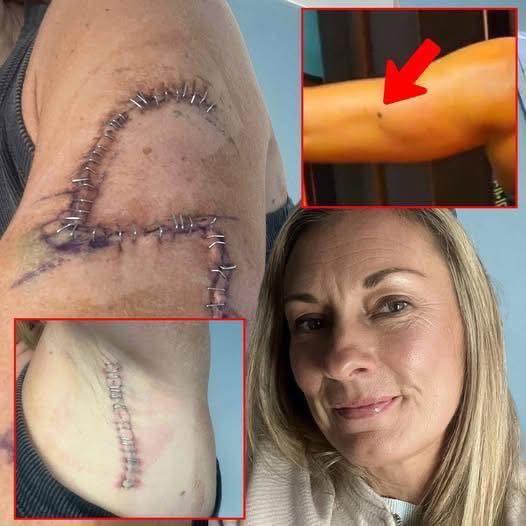Sarah Mitchell, a 34-year-old from Oregon, first noticed a small mole on her shoulder, but it seemed harmless—just like the other moles she’d had since her teens. It was flat, round, and light brown without any itching or pain. Because it blended in so naturally, she didn’t give it much thought.
Life was busy, and without any history of skin problems, Sarah dismissed it as nothing unusual. Slowly, however, the mole began to change. It darkened just a bit, became slightly raised, and the edges lost their smooth shape. Still, she hesitated to act, believing skin cancer was obvious and dramatic, which this mole wasn’t. It wasn’t until a concerned friend pointed it out that she finally made an appointment with a dermatologist.
That single visit changed everything. The doctor recommended a biopsy, and within days Sarah got the devastating news—melanoma, the most dangerous type of skin cancer. It was a shock. The little mole she’d ignored was a serious threat that could have cost her life if left alone.
Doctors swiftly planned surgery to remove the cancer, and it was more than Sarah expected. To ensure all the cancerous cells were gone, a deep and wide area around the mole had to be taken out. In total, she received 77 stitches across her shoulder and upper back. The pain was intense, but the emotional impact left the deepest mark.
Seeing the long scar every day reminded her how close she came to a much worse fate. Thankfully, the cancer hadn’t spread. Sarah’s experience gave her a newfound focus on health and awareness. She began sharing what she’d learned, encouraging others to watch their skin closely and seek medical advice when things change.
She emphasized that early detection can save lives and reduce the severity of treatment. Her story sparked conversations among friends, coworkers, and even strangers who learned about her journey online and at health talks.
Melanoma can be tricky—it sometimes looks just like any other mole until it doesn’t. Medical experts recommend checking your skin regularly for the ABCDEs: Asymmetry, Border irregularities, Color changes, Diameter over 6 millimeters, and Evolving shape or size. Because Sarah’s mole changed so gradually and subtly, she didn’t realize the danger until it was serious.
Now, she makes routine dermatology visits and monthly self-checks a priority. Sarah has become an advocate for skin cancer prevention, sharing her story to help others avoid the scare she endured.
Her journey from a small spot to 77 stitches and a cancer diagnosis is a powerful reminder to listen to your body. Don’t delay if something feels off—it could save your life. Today, Sarah is cancer-free and determined to help others stay safe by acting early.


